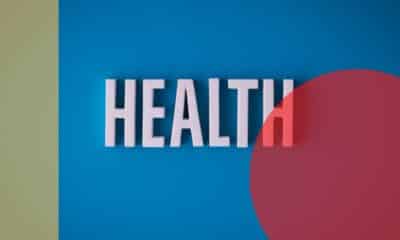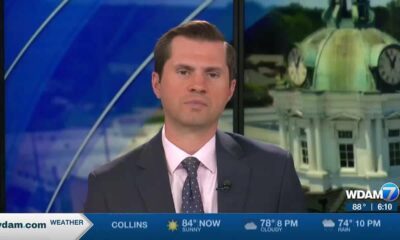Kaiser Health News
New York Joins Local Governments in Erasing Billions in Medical Debt
Yuki Noguchi, NPR News
Thu, 25 Jan 2024 10:00:00 +0000
New York City pledged this week to pay down $2 billion worth of residents' medical debt. In doing so, it has come around to an innovation, started in the Midwest, that's ridding millions of Americans of health care debt.
The idea of local government erasing debt emerged a couple of years ago in Cook County, Illinois, home to Chicago. Toni Preckwinkle, president of the county board of commissioners, says two staffers came to her with a bold proposal: The county could spend a portion of its federal pandemic rescue funds to ease a serious burden on its residents.
In 2022, Cook County became the first local government to partner with RIP Medical Debt, a nonprofit group that uses private donor funds to buy up and forgive patient debt.
RIP's model turns debt collection on its head. Normally, debt collectors buy unpaid bills and then try to collect the money owed. RIP identifies unpaid hospital bills owed by people making up to four times the federal poverty level, then buys that debt on secondary markets or directly from hospitals at a small fraction of the original value. Instead of trying to collect, RIP forgives it — so it simply disappears for the patients.
In the Chicago area, as across the country, medical debt is an ongoing problem, causing mental and financial strain that can follow patients for years. An estimated 100 million people in the U.S. carry some form of health care debt, KFF Health News and NPR reported in 2022.
Preckwinkle said the RIP model dovetailed nicely with Cook County's health care mission. For nearly two centuries, the county has funded its own hospital and health system, Cook County Health, in part to provide care to all residents, regardless of income.
“We have a legacy commitment to delivering quality health care to people without regard to their ability to pay,” Preckwinkle said.
She said that health care mission eats up nearly half of the county's $9.3 billion annual budget. It is now in the process of spending $12 million — a tiny portion of its budget — to retire $1 billion worth of hospital bills for residents.
Since Cook County announced its program, seven other local governments have followed suit, including Ohio cities Akron, Cleveland, and Toledo; New Orleans; Wayne County, Michigan; Washington, D.C.; and now New York City, which announced its commitment Jan. 22.
During his announcement, New York Mayor Eric Adams noted that medical debt disproportionately affects Black and Hispanic people, who are more likely to be uninsured or underinsured. For the city's low-income residents, he said, “taking on medical debt isn't a choice.”
“Working-class families often have to choose between paying their medical bills or some of the basic essentials that they need to go through life,” he said.
RIP is in talks with 30 other municipalities and states, including Connecticut, New Jersey, and Michigan.
Typically, RIP can retire at least $100 worth of debt for every $1 of government funds, so the local initiatives could end up wiping out several billion dollars in medical debt. The software selects eligible patients who remain anonymous, so it's hard to know what the impact of eliminating that debt might be across a community, or for the families that benefit.
Allison Sesso, CEO of RIP Medical Debt, acknowledged that debt is one of many factors contributing to unequal access to health care, and as hospital costs continue to rise, new debts are also piling up perhaps faster than her group can retire it. She said RIP hopes to retire $2.5 billion worth of unpaid medical bills through various government initiatives this year, but that's a drop in the bucket of the $195 billion estimated medical debt held by Americans.
“I'm under no illusions,” Sesso said. “I don't think what I'm doing is the solution to getting rid of medical debt, writ large.”
An Unusual Move for Local Government
Amber Clapsaddle said having the city of Toledo eliminate a $1,500 medical bill of hers from three years ago has given her hope.
In the past, Clapsaddle said, she looked down on those who didn't pay their bills. “I was like, ‘I'll never do that,' and I judged people really hard,” she said.
Then, several years ago, her entire family of five each got sick one after another, requiring numerous surgeries, ultrasounds, and diagnostic tests. She had insurance, but she and her husband, a warehouse worker, couldn't meet the $6,000 deductible. Clapsaddle, a social worker, realized why medical debt is such a prevalent problem: “It just takes one bill, one bad insurance plan, just one extra diagnosis to have it all fall apart.”
When Toledo's program with RIP forgave some of her family's debt two months ago, she cried with joy and relief. She said that motivated her to negotiate with doctors' offices and her insurance company to try to prevent herself from getting into debt again. “It's the spark that lights the fire of getting out of medical debt,” she said.
Debt forgiveness is an unusual solution for local governments. More are taking it on, aided by access to federal pandemic rescue funds through the American Rescue Plan Act of 2021, and RIP Medical Debt offered a quick and easy fix to distribute those funds to those most burdened by medical expenses.
Nationally, medical debt is shown to disproportionately affect people of color and people who earn less. It also contributes to a vicious health cycle, discouraging patients from seeking preventive or follow-up care, leading to worse and more expensive outcomes.
Cook County's Preckwinkle said the pandemic only deepened racial and income gaps that affect people's access to health care.
“I always talk about the fact that medical debt is the leading cause of bankruptcy in the United States,” she said.
Getting Down to the Root Causes of Debt
Medical debt is being created at high rates, Sesso said, and stronger policies — such as protecting consumers and strengthening insurance coverage — are needed to stop it at its source.
Often that boils down to high prices charged by hospitals and providers.
As Adams, the New York City mayor, put it: “You know, not only do you hold your breath when you go into a hospital or a doctor's office and wait for a diagnosis, you continue to hold your breath when you see the bill and what it costs, particularly for low-income New Yorkers.”
The idea of forgiving medical debt has broad political support, said Sesso, perhaps because the issue affects people of all political stripes. A recent RIP survey, she said, showed that “84% of people agreed that it is the responsibility of government to ensure health care is affordable, and that position is held by people on the left and the right.”
The enduring benefit of the recent local government initiatives is that they have helped draw more attention to the problem, raising its profile in useful ways, she said. “I think the issue of medical debt is becoming a priority, local governments are talking about it,” and that is leading to other conversations about what else they can do to get more eligible families insured through Medicaid, or through the Affordable Care Act insurance marketplace, for example.
It is also inspiring programs like one recently adopted by Milwaukee County, in which it's urging more hospitals and health systems to use credit reports to screen and automatically enroll eligible patients in financial assistance programs. These programs already exist to help reduce medical expenses for patients making up to three times the poverty level, but often patients are unaware or not told to apply for them.
By automating the process, as many as 50% more patients may receive free or reduced-cost care, so they have a better chance of avoiding incurring medical debt in the first place, said Shawn Rolland, a member of Milwaukee County's board of supervisors.
“Why make it more difficult than necessary to get enrolled?” he said. “Because ultimately this will make it more likely that they'll come back for preventative care.”
About This Project
“Diagnosis: Debt” is a reporting partnership between KFF Health News and NPR exploring the scale, impact, and causes of medical debt in America.
The series draws on original polling by KFF, court records, federal data on hospital finances, contracts obtained through public records requests, data on international health systems, and a yearlong investigation into the financial assistance and collection policies of more than 500 hospitals across the country.
Additional research was conducted by the Urban Institute, which analyzed credit bureau and other demographic data on poverty, race, and health status for KFF Health News to explore where medical debt is concentrated in the U.S. and what factors are associated with high debt levels.
The JPMorgan Chase Institute analyzed records from a sampling of Chase credit card holders to look at how customers' balances may be affected by major medical expenses. And the CED Project, a Denver nonprofit, worked with KFF Health News on a survey of its clients to explore links between medical debt and housing instability.
KFF Health News journalists worked with KFF public opinion researchers to design and analyze the “KFF Health Care Debt Survey.” The survey was conducted Feb. 25 through March 20, 2022, online and via telephone, in English and Spanish, among a nationally representative sample of 2,375 U.S. adults, including 1,292 adults with current health care debt and 382 adults who had health care debt in the past five years. The margin of sampling error is plus or minus 3 percentage points for the full sample and 3 percentage points for those with current debt. For results based on subgroups, the margin of sampling error may be higher.
Reporters from KFF Health News and NPR also conducted hundreds of interviews with patients across the country; spoke with physicians, health industry leaders, consumer advocates, debt lawyers, and researchers; and reviewed scores of studies and surveys about medical debt.
——————————
By: Yuki Noguchi, NPR News
Title: New York Joins Local Governments in Erasing Billions in Medical Debt
Sourced From: kffhealthnews.org/news/article/erasing-medical-debt-rip-new-york-city-local-governments-billions/
Published Date: Thu, 25 Jan 2024 10:00:00 +0000
Kaiser Health News
Watch: John Oliver Dishes on KFF Health News’ Opioid Settlements Series
Fri, 17 May 2024 09:00:00 +0000
Opioid manufacturers, distributors, and retailers are paying tens of billions of dollars in restitution to settle lawsuits related to their role in the nation's overdose epidemic. A recent broadcast of “Last Week Tonight With John Oliver” examined how that money is being spent by state and local governments across the United States.
The segment featured reporting from the KFF Health News series “Payback: Tracking the Opioid Settlement Cash.” You can learn more about the issue and read our collection of articles by Aneri Pattani here.
——————————
Title: Watch: John Oliver Dishes on KFF Health News' Opioid Settlements Series
Sourced From: kffhealthnews.org/news/article/watch-john-oliver-kff-health-news-payback-opioid-settlements-series/
Published Date: Fri, 17 May 2024 09:00:00 +0000
Kaiser Health News
KFF Health News’ ‘What the Health?’: Bird Flu Lands as the Next Public Health Challenge
Thu, 16 May 2024 18:30:00 +0000
The Host
Julie Rovner
KFF Health News
Julie Rovner is chief Washington correspondent and host of KFF Health News' weekly health policy news podcast, “What the Health?” A noted expert on health policy issues, Julie is the author of the critically praised reference book “Health Care Politics and Policy A to Z,” now in its third edition.
Public health officials are watching with concern since a strain of bird flu spread to dairy cows in at least nine states, and to at least one dairy worker. But in the wake of covid-19, many farmers are loath to let in health authorities for testing.
Meanwhile, another large health company — the Catholic hospital chain Ascension — has been targeted by a cyberattack, leading to serious problems at some facilities.
This week's panelists are Julie Rovner of KFF Health News, Rachel Cohrs Zhang of Stat, Alice Miranda Ollstein of Politico, and Sandhya Raman of CQ Roll Call.
Panelists
Rachel Cohrs Zhang
Stat News
Alice Miranda Ollstein
Politico
Sandhya Raman
CQ Roll Call
Among the takeaways from this week's episode:
- Stumbles in the early response to bird flu bear an uncomfortable resemblance to the early days of covid, including the troubles protecting workers who could be exposed to the disease. Notably, the Department of Agriculture benefited from millions in covid relief funds designed to strengthen disease surveillance.
- Congress is working to extend coverage of telehealth care; the question is, how to pay for it? Lawmakers appear to have settled on a two-year agreement, though more on the extension — including how much it will cost — remains unknown.
- Speaking of telehealth, a new report shows about 20% of medication abortions are supervised via telehealth care. State-level restrictions are forcing those in need of abortion care to turn to options farther from home.
- And new reporting on Medicaid illuminates the number of people falling through the cracks of the government health system for low-income and disabled Americans — including how insurance companies benefit from individuals' confusion over whether they have Medicaid coverage at all.
Also this week, Rovner interviews Atul Grover of the Association of American Medical Colleges about its recent analysis showing that graduating medical students are avoiding training in states with abortion bans and major restrictions.
Plus, for “extra credit,” the panelists suggest health policy stories they read this week that they think you should read, too:
Julie Rovner: NPR's “Why Writing by Hand Beats Typing for Thinking and Learning,” by Jonathan Lambert.
Alice Miranda Ollstein: Time's “‘I Don't Have Faith in Doctors Anymore.' Women Say They Were Pressured Into Long-Term Birth Control,” by Alana Semuels.
Rachel Cohrs Zhang: Stat's “After Decades Fighting Big Tobacco, Cliff Douglas Now Leads a Foundation Funded by His Former Adversaries,” by Nicholas Florko.
Sandhya Raman: The Baltimore Banner's “People With Severe Mental Illness Are Stuck in Jail. Montgomery County Is the Epicenter of the Problem,” by Ben Conarck.
Also mentioned on this week's podcast:
- Stat's “My Rendezvous With the Raw Milk Black Market: Quick, Easy, and Unchecked by the FDA,” by Nicholas Florko.
- The Stamford Advocate's “Dan Haar: Hackers Stole a Disabled CT Couple's SNAP Food Aid. Now They're Out $1,373,” by Dan Haar.
- WKRN's “‘Chaos': Nurses, Visitors Describe Conditions Inside Ascension Hospitals After Cyberattack,” by Stephanie Langston.
- KFF Health News' “Medicaid ‘Unwinding' Decried as Biased Against Disabled People,” by Daniel Chang.
- KFF Health News' “Why Medicaid's ‘Undercount' Problem Counts,” by Phil Galewitz.
Credits
Francis Ying
Audio producer
Emmarie Huetteman
Editor
To hear all our podcasts, click here.
And subscribe to KFF Health News' “What the Health?” on Spotify, Apple Podcasts, Pocket Casts, or wherever you listen to podcasts.
——————————
Title: KFF Health News' ‘What the Health?': Bird Flu Lands as the Next Public Health Challenge
Sourced From: kffhealthnews.org/news/podcast/what-the-health-347-bird-flu-next-public-health-challenge-may-16-2024/
Published Date: Thu, 16 May 2024 18:30:00 +0000
Kaiser Health News
California’s $12 Billion Medicaid Makeover Banks on Nonprofits’ Buy-In
Angela Hart
Thu, 16 May 2024 09:00:00 +0000
TURLOCK, Calif. — For much of his young life, Jorge Sanchez regularly gasped for air, at times coughing so violently that he'd almost throw up. His mother whisked him to the emergency room late at night and slept with him to make sure he didn't stop breathing.
“He's had these problems since he was born, and I couldn't figure out what was triggering his asthma,” Fabiola Sandoval said of her son, Jorge, now 4. “It's so hard when your child is hurting. I was willing to try anything.”
In January, community health workers visited Sandoval's home in Turlock, a city in California's Central Valley where dust from fruit and nut orchards billows through the air. They scoured Sandoval's home for hazards and explained that harsh cleaning products, air fresheners, and airborne dust and pesticides can trigger an asthma attack.
The team also provided Sandoval with air purifiers, a special vacuum cleaner that can suck dust out of the air, hypoallergenic mattress covers, and a humidity sensor — goods that retail for hundreds of dollars. Within a few months, Jorge was breathing easier and was able to run and play outside.
The in-home consultation and supplies were paid for by Medi-Cal, California's Medicaid health insurance program for low-income residents. Gov. Gavin Newsom is spearheading an ambitious $12 billion experiment to transform Medi-Cal into both a health insurer and a social services provider, one that relies not only on doctors and nurses, but also community health workers and nonprofit groups that offer dozens of services, including delivering healthy meals and helping homeless people pay for housing.
These groups are redefining health care in California as they compete with businesses for a share of the money, and become a new arm of the sprawling Medi-Cal bureaucracy that serves nearly 15 million low-income residents on an annual budget of $158 billion.
But worker shortages, negotiations with health insurance companies, and learning to navigate complex billing and technology systems have hamstrung the community groups' ability to deliver the new services: Now into the third year of the ambitious five-year experiment, only a small fraction of eligible patients have received benefits.
“This is still so new, and everyone is just overwhelmed at this point, so it's slow-going,” said Kevin Hamilton, a senior director at the Central California Asthma Collaborative.
The collaborative has served about 3,650 patients, including Sandoval, in eight counties since early 2022, he said. It has years of experience with Medi-Cal patients in the Central Valley and has received about $1.5 million of the new initiative's money.
By contrast, CalOptima Health, Orange County's primary Medi-Cal insurer, is new to offering asthma benefits and has signed up 58 patients so far.
“Asthma services are so difficult to get going” because the nonprofit infrastructure for these services is virtually nonexistent, said Kelly Bruno-Nelson, CalOptima's executive director for Medi-Cal. “We need more community-based organizations on board because they're the ones who can serve a population that nobody wants to deal with.”
Newsom, a Democrat in his second term, says his signature health care initiative, known as CalAIM, seeks to reduce the cost of caring for the state's sickest and most vulnerable patients, including homeless Californians, foster children, former inmates, and people battling addiction disorders.
In addition to in-home asthma remediation, CalAIM offers 13 broad categories of social services, plus a benefit connecting eligible patients with one-on-one care managers to help them obtain anything they need to get healthier, from grocery shopping to finding a job.
The 25 managed-care insurance companies participating in Medi-Cal can choose which services they offer, and contract with community groups to provide them. Insurers have hammered out about 4,300 large and small contracts with nonprofits and businesses.
So far, about 103,000 Medi-Cal patients have received CalAIM services and roughly 160,000 have been assigned personal care managers, according to state data, a sliver of the hundreds of thousands of patients who likely qualify.
“We're all new to health care, and a lot of this is such a foreign concept,” said Helena Lopez, executive director of A Greater Hope, a nonprofit organization providing social services in Riverside and San Bernardino counties, such as handing out baseball cleats to children to help them be active.
Tiffany Sickler runs Koinonia Family Services, which offers California foster children mental health and other types of care, and even helped a patient pay off parking tickets. But the program is struggling on a shoestring budget.
“If you want to do this, you have to learn all these new systems. It's been a huge learning curve, and very time-consuming and frustrating, especially without adequate funding,” she said.
Brandon Richards, a Newsom spokesperson, defended CalAIM, saying that it was “on the cutting edge of health care” and that the state was working to increase “awareness of these new services and support.”
For nonprofits and businesses, CalAIM is a money-making opportunity — one that top state health officials hope to make permanent. Health insurers, which receive hefty payments from the state to serve more people and offer new services, share a portion with service providers.
In some places, community groups are competing with national corporations for the new funding, such as Mom's Meals, an Iowa-based company that delivers prepared meals across the United States.
Mom's Meals has an advantage over neighborhood nonprofit groups because it has long served seniors on Medicare and was able to immediately start offering the CalAIM benefit of home-delivered meals for patients with chronic diseases. But even Mom's Meals isn't reaching everyone who qualifies, because doctors and patients don't always know it's an option, said Catherine Macpherson, the company's chief nutrition officer.
“Utilization is not as high as it should be yet,” she said. “But we were well positioned, because we already had departments to do billing and contracting with health care.”
Middleman companies also have their eye on the billions of CalAIM dollars and are popping up to assist small organizations to go up against established ones like Mom's Meals. For instance, the New York-based Nonprofit Finance Fund is advising homeless service providers how to get more contracts and expand benefits.
Full Circle Health Network, with 70 member organizations, is helping smaller nonprofit groups develop and deliver services primarily for families and foster children. Full Circle has signed a deal with Kaiser Permanente, allowing the health care giant to access its network of community groups.
“We're allowing organizations to launch these benefits much faster than they've been able to do and to reach more vulnerable people,” said Camille Schraeder, chief executive of Full Circle. “Many of these are grassroots organizations that have the trust and expertise on the ground, but they're new to health care.”
One of the biggest challenges community groups face is hiring workers, who are key to finding eligible patients and persuading them to participate.
Kathryn Phillips, a workforce expert at the California Health Care Foundation, said there isn't enough seed money for community groups to hire workers and pay for new technology platforms. “They bring the trust that is needed, the cultural competency, the diversity of languages,” she said. “But there needs to be more funding and reimbursement to build this workforce.”
Health insurers say they are trying to increase the workforce. For instance, L.A. Care Health Plan, the largest Medi-Cal insurer in California, has given $66 million to community organizations for hiring and other CalAIM needs, said Sameer Amin, the group's chief medical officer.
“They don't have the staffing to do all this stuff, so we're helping with that all while teaching them how to build up their health care infrastructure,” he said. “Everyone wants a win, but this isn't going to be successful overnight.”
In the Central Valley, Jorge Sanchez is one of the lucky early beneficiaries of CalAIM.
His mother credits the trust she established with community health workers, who spent many hours over multiple visits to teach her how to control her son's asthma.
“I used to love cleaning with bleach” but learned it can trigger breathing problems, Sandoval said.
Since she implemented the health workers' recommendations, Sandoval has been able to let Jorge sleep alone at night for the first time in four years.
“Having this program and all the things available is amazing,” said Sandoval, as she pointed to the dirty dust cup in her new vacuum cleaner. “Now my son doesn't have as many asthma attacks and he can run around and be a normal kid.”
This article was produced by KFF Health News, which publishes California Healthline, an editorially independent service of the California Health Care Foundation.
——————————
By: Angela Hart
Title: California's $12 Billion Medicaid Makeover Banks on Nonprofits' Buy-In
Sourced From: kffhealthnews.org/news/article/newsom-medicaid-12-billion-dollar-makeover-nonprofits-bureacracy-calaim/
Published Date: Thu, 16 May 2024 09:00:00 +0000
-
SuperTalk FM4 days ago
Martin Lawrence making 3 stops in Mississippi on comedy tour
-
Our Mississippi Home3 days ago
Beat the Heat with Mississippi’s Best Waterparks
-
Mississippi Today7 days ago
Lawmakers may have to return to Capitol May 14 to override Gov. Tate Reeves’ potential vetoes
-
Our Mississippi Home4 days ago
Charlie’s U-Pik: Opening Soon for the Summer Season
-
Mississippi News Video6 days ago
Local dentists offer free dental care in Amory
-
Kaiser Health News3 days ago
Medicaid ‘Unwinding’ Decried as Biased Against Disabled People
-
Mississippi News Video2 days ago
Jackson has a gang problem
-
Mississippi News7 days ago
Bond set for West Point couple accused of killing their child



























![HIGH SCHOOL SOFTBALL: Vancleave @ East Central (5/9/2024) [5A Playoffs, South State]](https://www.biloxinewsevents.com/wp-content/uploads/2024/05/1715460379_maxresdefault-80x80.jpg)








